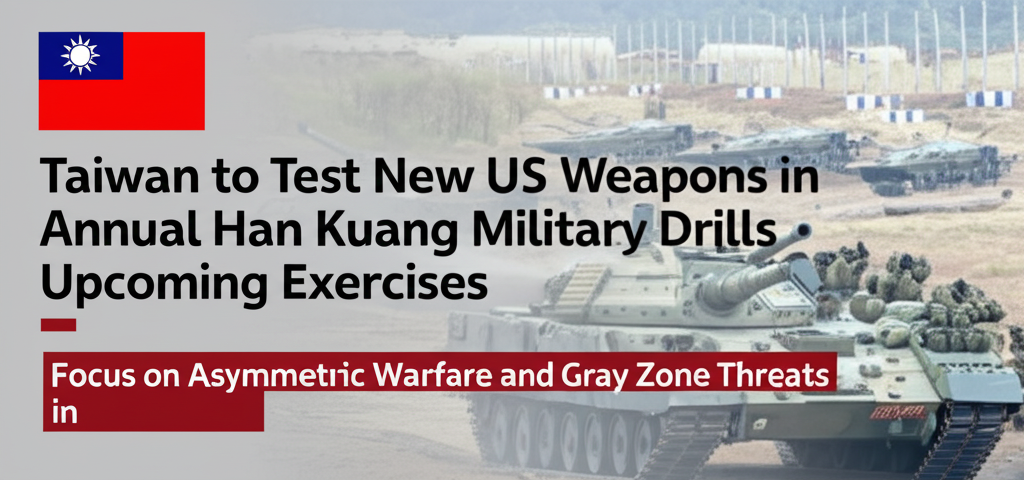Taiwan to Test New US Weapons in Annual Han Kuang Military Drills
Focus on Asymmetric Warfare and Gray Zone Threats in Upcoming Exercises

Taiwan is set to integrate and test recently acquired US weapon systems during the 41st annual Han Kuang exercise later this year, according to the Ministry of National Defense.
The drills, as stated by Major General Tung Chi-hsing (董冀星), Director of the ministry’s Joint Operations Planning Division, will emphasize responses to "gray zone" activities, rapid combat readiness, delegation of command authority, and national-level threat assessment.
The exercises will also concentrate on in-depth defense capabilities, logistics, civil defense integration, and the effective deployment of these new weapon systems.
Last year, the armed forces began incorporating new systems, including M1A2T main battle tanks, High Mobility Artillery Rocket Systems, TOW-2B anti-tank guided missiles, land-based Harpoon anti-ship missiles, and various uncrewed aerial vehicles.
These drills are designed to evaluate Taiwanese commanders' proficiency in employing these key asymmetric assets operationally, as stated by Tung.
In February, military staff conducted a map-based wargame to plan this year’s Han Kuang exercise.
From a specified date to April 18, various command headquarters will simulate military operations against Chinese People’s Liberation Army (PLA) forces in scenarios ranging from "gray zone" skirmishes to high-intensity conflicts, as explained by Tung.
The Joint Theater Level Simulation Platform will be utilized in this phase, with headquarters expected to engage in continuous simulated combat throughout the exercise.
Field maneuvers are scheduled from a specific date to 18 in and around Taiwan, including its outlying islands, airspace, and surrounding seas, as stated by Tung.
Leaders at all levels are tasked with designing field problems and leading troops in combat practice within their areas of responsibility, according to Tung.
The field exercises will coincide with extensive civil defense drills, including simulated defense of built-up areas.
Military personnel will participate fully armed and equipped, with live ammunition used in portions of the exercise, Tung added.
In related news, a defense official announced that the navy’s fifth mobile squadron of the Hai Feng Shore-Based Anti-ship Missile Group achieved operational readiness last month, five months after its establishment in November of the previous year.
The dedicated land-based anti-ship missile group now comprises 12 squadrons, including six static squadrons, five mobile squadrons, and one support squadron, according to the source.
Starting January 1 of next year, the Hai Feng Shore-Based Anti-ship Missile Group is slated to be reorganized as the Littoral Combat Command, encompassing northern, central, southern, and eastern "strike groups."
This anti-ship missile group is equipped with the domestically developed Hsiung Feng II and Hsiung Feng III family of missiles and their extended-range variants, in addition to the US-made Harpoon missiles currently being fielded.
Once fully equipped, these squadrons are expected to achieve a 70 percent kill probability against the PLA’s surface combatants and transports.
The Hsiung Feng II missile has an effective range of 148km, while the Hsiung Feng IIE — the extended-range variant — has an estimated range of 160km to 200km and features advanced electronic warfare countermeasures.
The Hsiung Feng III missile has an estimated effective range of 150km to 200km and a maximum range of 250km.
The extended-range variant of the Hsiung III missile, now entering service, boasts a maximum range of 400km, surpassing other systems in the navy's arsenal.
The AGM-84L-1 Harpoon Block II missiles purchased from the US represent the most advanced version of this weapon system, with largely classified capabilities.
